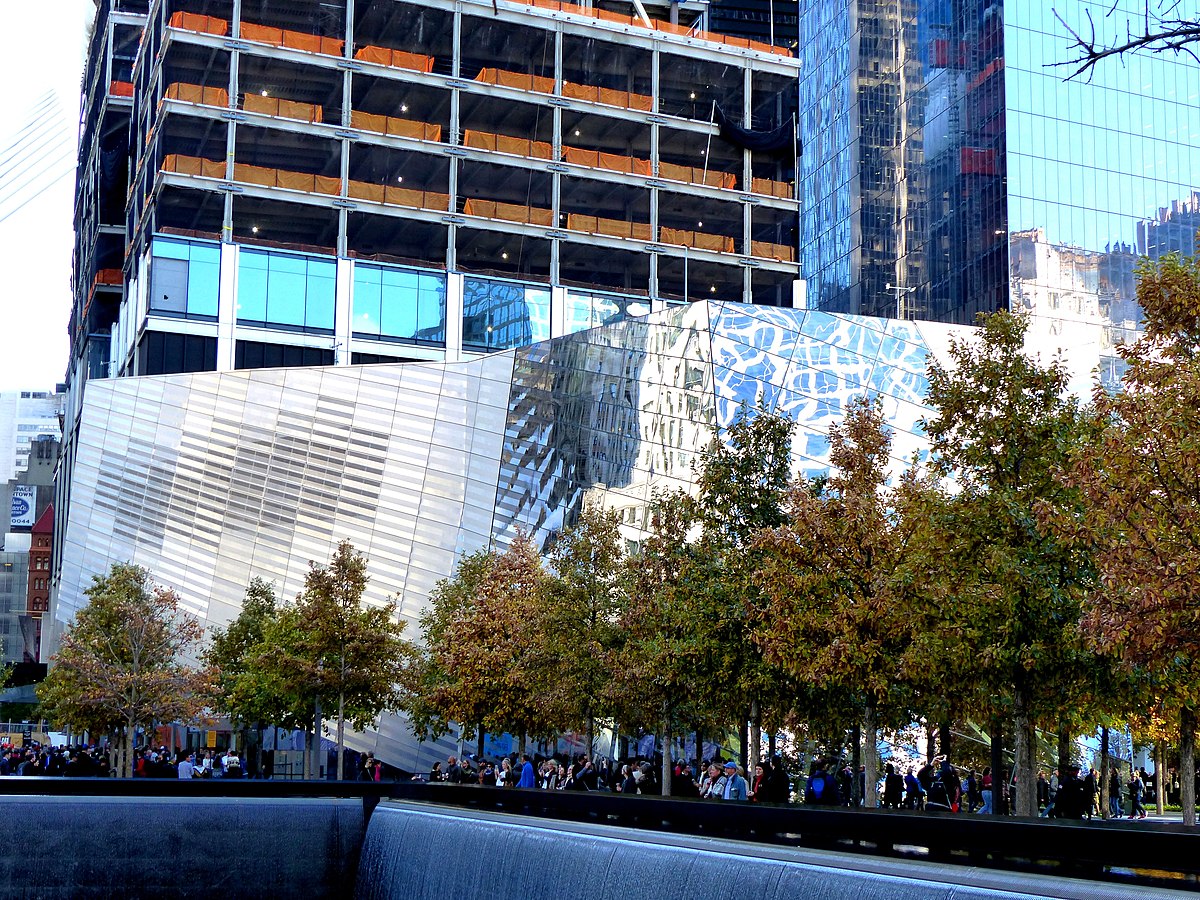Landscape architects can play a pivotal role in helping us remember triumph and tragedy in the form of memorials, monuments, and outdoor places for reflection. In honor of the 17th anniversary of the 9/11 terrorist attacks, we'll take a look at the design of the National 9/11 Memorial, designed by architect Michael Arad and landscape architect Peter Walker and think about how it helps residents and visitors in New York City remember the past while looking forward to the future.
The plaza covers about 8 acres at the former site of the World Trade Center and is set at street level to fully integrate it with city life. The most immediately obvious design features are the two massive square pools recessed into the ground and fed by cascades flowing from the rims of the structures. The pools sit on the footprints of the twin towers and create a soothing, healing sound. The names of those who lost their lives in the attacks are etched into bronze set around the two pools, a convention set by another landscape architect, Maya Lin, at the Vietnam Veterans Memorial. The long list serves to emphasize the scale of the tragedy but also to recognize the importance of each life.
These pools are surrounded by a grove of swamp white oaks that provide shelter and will one day screen and soften the view of the brass-rimmed pools. This symbolizes the fact the life will continue and the nation will recover, but we will never forget. Swamp white oaks were selected for their tolerance of city conditions and golden fall color. As they grow to a mature height upwards of 50 feet, the oaks will form a dense ceiling above the plaza that creates a serene, almost church-like space for reflection in the middle of the bustling city.
Without careful design, the flat, expansive space could appear monotonous. The designers punctuated the parallel rows of trees and pavement with areas of lawn, groundcover, steel grating, and varied paving patterns. The overall lines of the trees aren't interrupted, so the design becomes interesting and engaging both from a distance and up close. Stretches of grass in front of the entrances to the museum allow for some sunlit space to rest.
In keeping with the desire to look to the future, the memorial-museum project is seeking LEED Gold certification by implementing sustainable design and construction practices that minimize the project's impact on the planet and ensure that it will endure for years to come. The plaza itself is one massive green roof for the museum underneath. The oaks and other plants are planted in a matrix of specially formulated soil that fills a mostly hollow concrete structure to allow ample root space for the oaks. Urban trees rarely get the root space they need to thrive, so in a traditional setting, these swamp white oaks would die long before reaching maturity. With this system, they should live for decades, as long as there are no other problems. The green roof captures enough rainwater to supply most of the annual irrigation needs for the plaza. Learn more about the sustainable design features on their website.
The National 9/11 Memorial is just one of many examples of how a well-designed landscape can help us connect to our past in meaningful ways. The pools permanently remember the twin towers, and the oaks create a sacred space for remembrance. Yet the oaks themselves and the sustainability of the design remind us that we can move forward and plan for the future. For a more in-depth look at the design and all the meaning behind it, visit the 9/11 Memorial website or check out the information available on Peter Walker's website.







